Expandable Featured Snippets Mark Continued Shift in Search
— August 25, 2018
It’s been a year of many changes, big and small, to Google’s organic search results. Still, after a Spring that saw, in order, zero search results, more search results, and the displacement of featured snippets with direct answers, this Summer has been relatively quiet. We’ve seen chatter around some ground-rattling core algorithm updates, sure—like the one on August 1—but there’s been little in the way of overt changes to the appearance of the SERP for a few months.
That is, until now. SEO news-philes rejoice—it’s time to freak out about another new search results feature. Expandable featured snippets have landed.
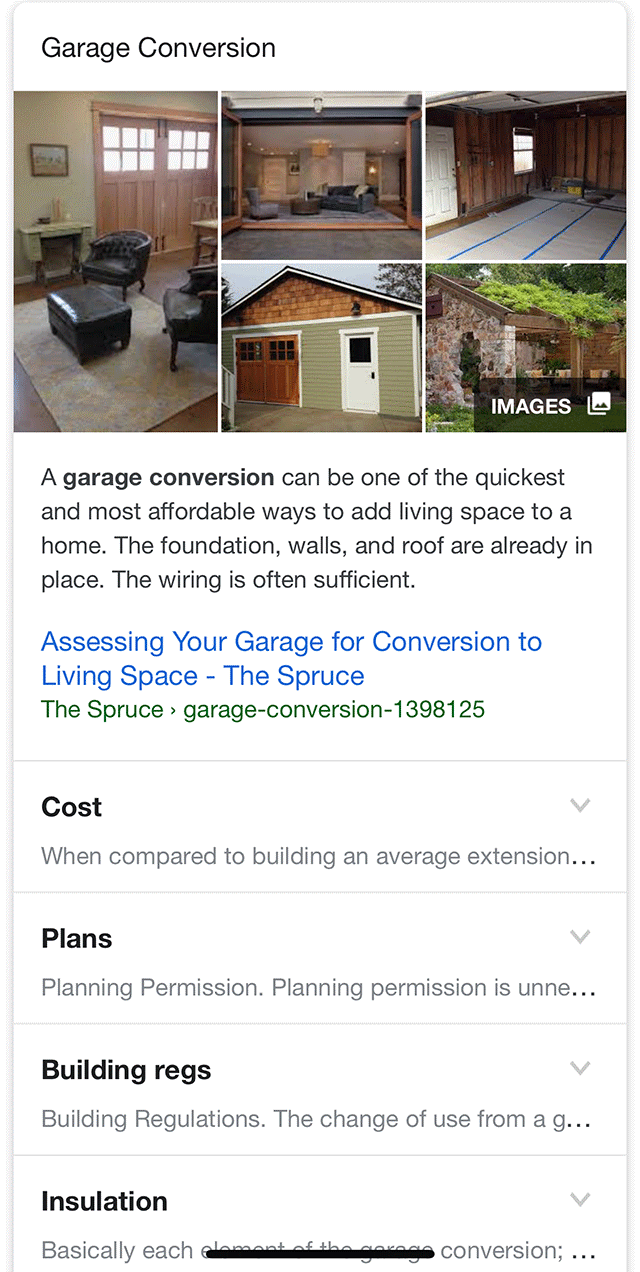
What Are Expandable Featured Snippets?
Expandable featured snippets—not an official name, but a suitable one—are the latest in a series in improvements Google has made to the SERP to provide more comprehensive and nuanced results for search queries. Specifically, we can call it a technical offshoot of featured snippets for multi-intent queries, which Google released in February. Multi-intent featured snippets, as the name suggests, return multi-faceted featured snippets for queries that have multiple search intents. To use Google’s example: “garden needs full sun?” is a query loaded with two potential intents…
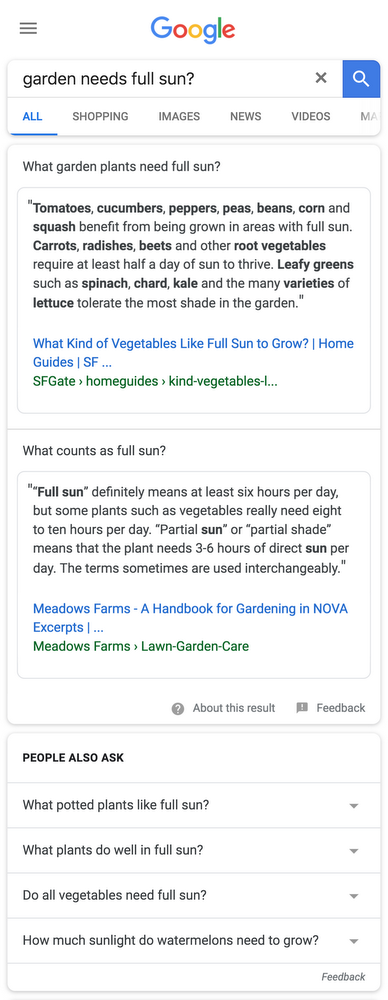
Multi-intent featured snippets display results for both potential intents. It follows—and Google foretold this evolution in its February blog post—that a better featured snippet would be able to cover not just a wider range of queries, but go deeper into those queries as well. That’s what expandable snippets do—they provide vertical coverage where multi-faceted snippets provide horizontal:
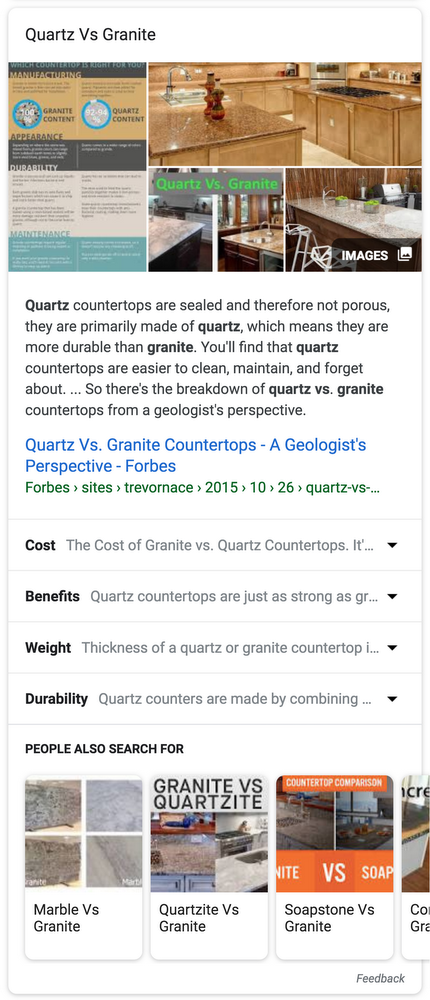
Per Google’s blog post on the subject, published August 16, the purpose of expandable featured snippets is to provide useful information on specific subtopics—cost, benefits, durability, etc.—related to your source query. So, if we’re going off the above example, you aren’t sure whether to go with granite countertops or quartz countertops, Google will not only deduce by your “quartz vs. granite” query that you are looking for information about countertops, it will provide a snippet replete with the kind of in-depth information you’d typically only get from reading the content.
Google automatically generates the expandable panels based on its understanding of the content you’re searching for. The information provided therein is meant to represent the most common, useful aspects of that topic.
Why Does It Matter?
Expandable featured snippets are not just and offshoot of multi-intent snippets; they’re the latest in a series of deliberately mapped developments pointed at making featured snippets more accurate and more in-depth. Google has always—is always—focused on making search results more relevant to users. Featured snippets have been the vessel through which they’ve harnessed their efforts in 2018.
Despite the influx in direct answers in the Spring, and the subsequent decrease in featured snippets, long-term trends suggest that featured snippets are going to continue to be a prominent feature in organic search.
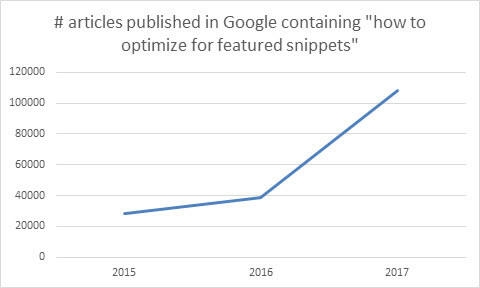
The number of articles written for subjects around “how to optimize for featured snippets” jumped 178 percent in the last year. Part of that has to do with the increasing prominence/functionality of snippets as a feature. Another, perhaps bigger part of it has to do with voice search: per comScore, 50% of all searches will be voice searches by 2020. Voice assistants lean heavily on featured snippets when providing answers to queries conducted using voice search. Content producers understand the coveted real estate the voice search landscape represents, and they’re harping on getting snippets now more than ever.
Being First Is Old News
If you’re not first, you’re last. That’s the mantra. Whether you’re agency or in-house, “being first” has been the end-all-be-all in SEO since its inception.
But what the expanded functionality of featured snippets means—what it really means—is that achieving that “0” ranking is steadily becoming the benchmark for SEO success. As voice search becomes more and more prominent—still waiting for all those portents to come to fruition, by the way—achieving a high ranking will matter less than achieving the highest ranking. (If you’re unfamiliar with rank tracking software, “0” typically denotes that the page holds a featured snippet). Owning the number one slot will give you no leverage with voice assistants if there’s a snippet ahead of you.
Expandable featured snippets are more a symptom of a larger movement toward more relevant, direct, and immediate search results than the sole vessel for that movement. Google’s Gary Illyes announced three new search features (Customized, rich results for Q&A, FAQ, and how-to content) at Google Dance Singapore, all of which portend the widespread prominence and importance of very-top-of-the-SERP results.
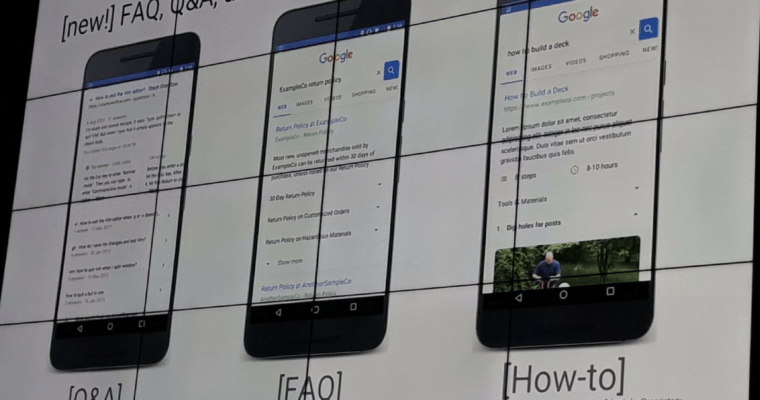
It’s yet unclear whether or not we can mark these new features a part of expanded functionality of featured snippets. But it is clear that they’re at least in the same species of feature—rich results that display relevant, immediate information for common types of queries.
Should Publishers Worry About Traffic?
Short answer: Kind of.
Long answer: There is definite anxiety that with the increased need for featured snippets will come the decreased need for users to actually click-through to pages—and, with it, a decrease in traffic. The concern is valid: and we have in fact found data that supports the idea that featured snippets decrease click-through rates. In the context of voice search, the problem is the same: snippets give you the brand recognition, but how do you monetize if people aren’t actually coming to your site?
One solution is to make sure you’re covering content for both simple and complex queries—queries that are likely to turn up featured snippets, and those that aren’t (one way to know for sure is to just enter the query and see what turns up). You can also use tools like Ahrefs and SEMrush to check traffic approximations for specific rankings on specific keywords—thus determining how much a featured snippet for a given query affects traffic for that query, and if it’s worth it or not for you to gun for the top spot.
Closing Thoughts: To Mark-Up or Not to Mark-Up?
At this point, you’re probably asking yourself, How do I optimize my content to give it the best chance to get featured at the very top of the SERP? The answer is this: don’t do anything differently. Keep focusing on creating the best, most informative content you can. Expandable featured snippets don’t generate via markup language; and while Google recently released a new type of structured data for marking up tables, and could introduce more types of structured data for like purposes, it is yet unclear whether or not the features introduced at Google Dance Singapore will require any kind of markup data.
The solution, for now, continues to be the solution Google always offers concerned SEOs when new changes to search go live: create high-quality content, don’t do anything sketchy, and you’ll give yourself a good chance to rank.
Digital & Social Articles on Business 2 Community
(38)

